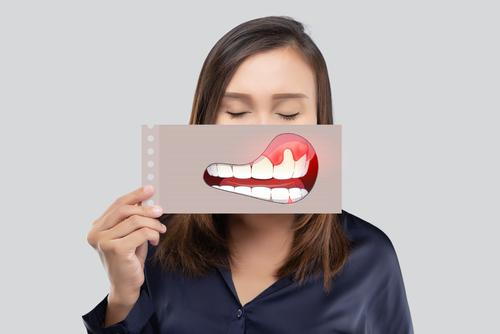
Gum disease can be a painful, stressful, and dangerous condition. Many who have received a gum disease diagnosis have wondered—can it be reversed? Let’s take a moment to consider gum disease, how it is treated, and the potential for reversing it.
What, Exactly, Is Gum Disease?
Gum disease, also known as periodontal disease, is a bacterial infection that affects the tissues supporting your teeth, including the gums and bone. It typically develops when plaque, a sticky film of bacteria, builds up on your teeth and hardens into tartar. Early stages of gum disease, called gingivitis, often manifest with symptoms such as red, swollen gums and bleeding during brushing or flossing. If left untreated, gingivitis can progress to periodontitis, a more severe form of gum disease that may lead to tooth loss.
Reversing Gingivitis
Good news! Gingivitis, the initial stage of gum disease, can often be reversed with timely and proper care. Here are five key steps to help reverse gingivitis:
Schedule Regular Dental Cleanings
Regular dental cleanings performed by a professional dental hygienist are essential. They remove plaque and tartar, addressing the root cause of gingivitis.
Maintain Consistent Oral Hygiene Practices
Brushing your teeth at least twice a day and flossing once a day are crucial components of maintaining good oral hygiene. These practices help remove plaque and prevent its buildup.
Use Antimicrobial Mouthwash
Using an antimicrobial or antiseptic mouthwash can help reduce bacteria in the mouth and support gum health. Ask your dentist to recommend a specific product based on your individual needs.
Schedule Regular Dental Check-Ups
Routine dental check-ups allow your dentist to monitor your oral health, detect signs of gum disease, and provide necessary interventions.
Practice Healthy Lifestyle Habits
Maintaining a healthy lifestyle, including eating a balanced diet and avoiding tobacco products, contributes greatly to overall gum health.
Managing Periodontitis
While gingivitis can often be reversed, periodontitis may require more comprehensive treatment. However, with diligent care, it is possible to manage and halt the progression of periodontitis. Here are common interventions for managing periodontitis:
Deep Cleaning
A non-surgical procedure called scaling and root planing involves removing plaque and tartar from above and below the gum line and smoothing out rough spots on the tooth roots to discourage bacterial buildup.
Antibiotics
In some cases, your dentist may prescribe antibiotics, either in pill form or applied directly to the infected area, to help control the infection.
Laser Therapy
Advanced technologies, such as laser therapy, may be used to remove infected tissue and promote healing.
Surgical Interventions
In severe cases, surgical procedures like gum grafts or flap surgery may be recommended to repair or regenerate damaged tissues.
Mona Gokani, DDS
If you suspect that you or your family member may have gum disease or if it’s been some time since your last dental check-up, don’t hesitate to reach out to the office of Mona Gokani, Pleasanton family dentist. You can reach us at (925) 462-1464. A healthy smile begins with a healthy foundation and, by taking the necessary steps, you can ensure the well-being of your gums and overall oral health.
